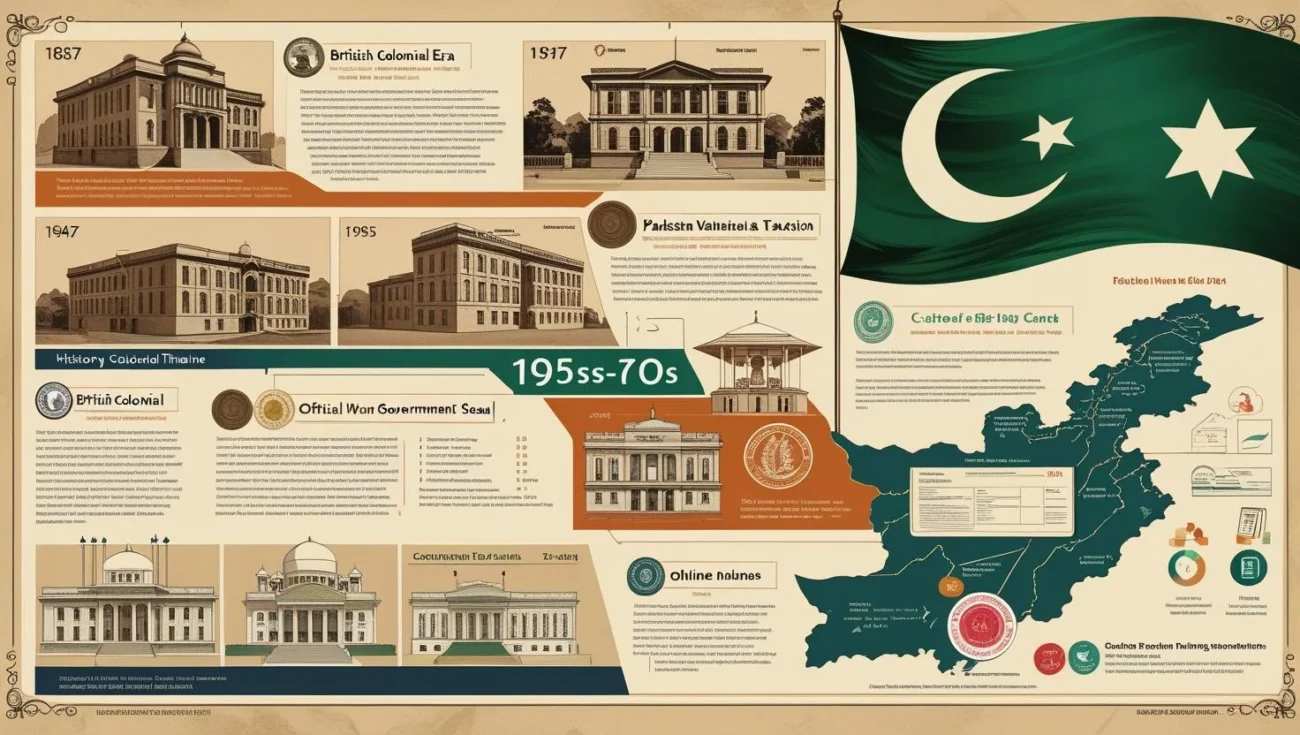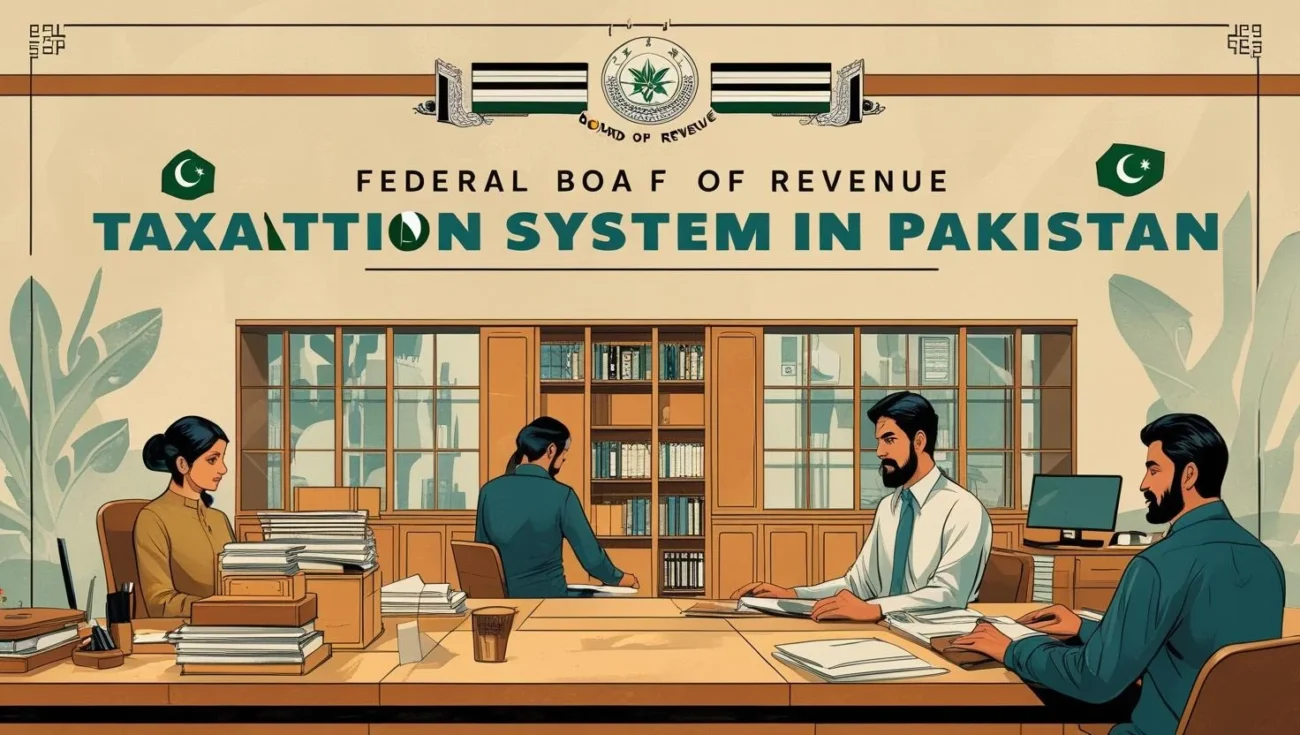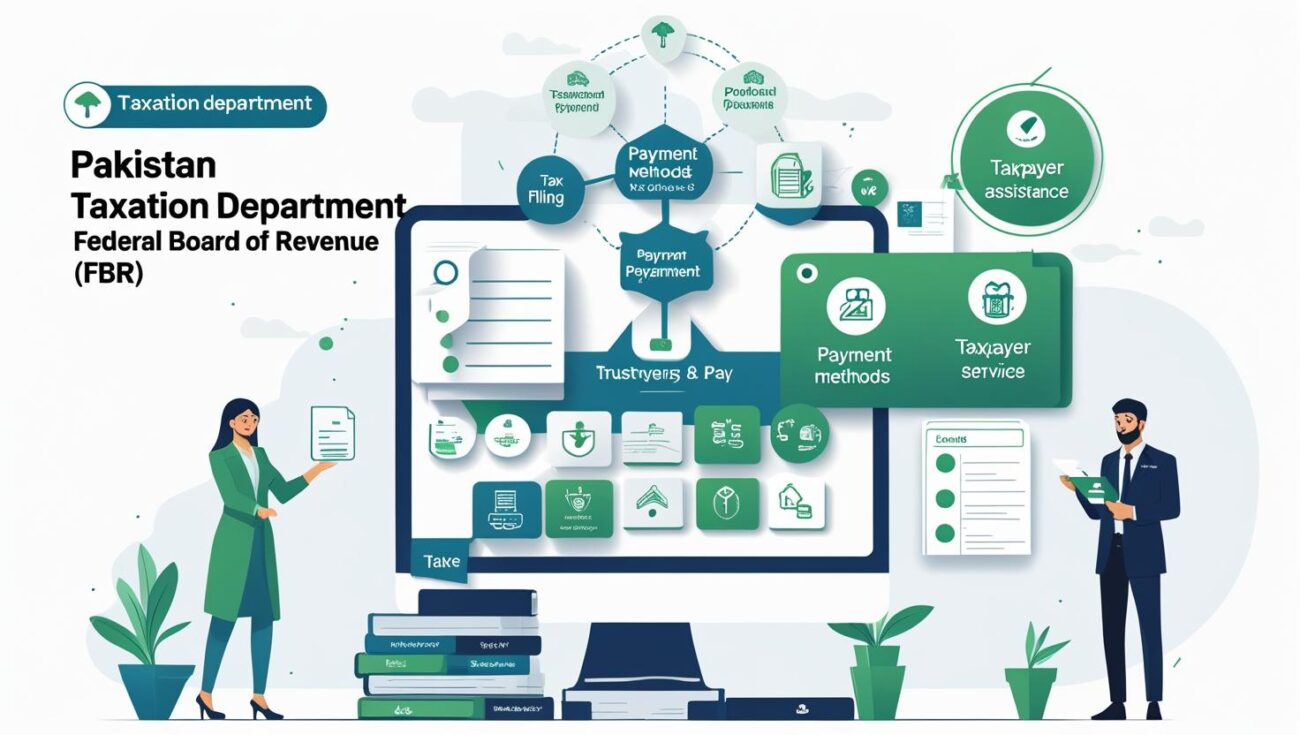The history of taxation system in Pakistan is deeply interwoven with the country’s political, economic, and institutional evolution. Pakistan has been salvaging to designer a fair and efficient fiscal system since it became independent in 1947. Although there have been some reforms to modernize certain aspects of the system, enduring structural problems — such as a small tax base, widespread informality and political aversion to direct taxation — remain ongoing stumbling blocks.
Examining the history of taxation system in Pakistan helps explain the persistent shortfall in revenue collection, despite the nation’s demographic and economic scale. This article provides an overview of where and how Pakistan’s system of taxation evolved, and its historical and contemporary constraints, to give an in-depth picture of the antecedents and pitfalls of taxation in the country.
Colonial Legacy and the Inherited Framework
As of independence, Pakistan has the same system of taxation as British India. The Central Board of Revenue that came into existence as a result of the CBR Act, 1924, had a wide operational scope under the said Act but its functions were being extended to cover other domestic taxes such as Income Tax. The colonial system was based on indirect forms of taxation—customs duties and excise which, though regressive in nature, were easy to manage.
Pakistan’s initial tax system was largely based on British-enacted Indian income tax laws, notably the Indian Income Tax Act of 1922. It had progressive income buckets and spared agricultural income, a policy that survives to this day and severely confines Pakistan’s direct tax base. Pakistan Tax Establishment The history of tax system in Pakistan started with the asymmetry in the capacity to collect taxes and fairness of the tax system.
Post-Independence Centralization and Provincial Sharing
In the first few decades after 1947, Pakistan adopted a tax model of the centralized system. The federal government could still impose major taxes with the consent of the provinces (this power was exercised through the Raisman Award (1951) and the creation of the National Finance Commission (NFC).
Even in the formative decades of the 1950s and 1960s, the tax-to-GDP ratio hovered around a modest 6%. This revenue base was dominated by indirect taxes like customs and excise duties and sales taxes. Direct tax was still underdeveloped as a result of administrative capacity and political resistance against having to subject wealthy interest groups to income tax.
It was the same story of taxation system broken during this period of time as well when they depended too much on consumption taxes which not too much has been done on the side of expanding the income and corporate taxes base.
Nationalization and Economic Stagnation (1960s–1970s)
During the 1970s, efforts to reform the tax system faced major obstacles. Under Prime Minister Zulfikar Ali Bhutto, the nationalization of core industries resulted in their stagnation, as state oversight failed to provide necessary support. This change depressed private enterprise and twisted tax incentives. As fewer private businesses were profitable, corporate tax revenue declined.
Throughout the decade, the tax-to-GDP ratio was roughly 8%. The major sources of revenue continued to be indirect taxes such as sales tax and excise duty. Even as economies changed, there were no substantial reforms to widen the base and force compliance.
Over reliance on regressive taxes missed opportunities of a structural reform The 70’s 1.0 The history of taxation system in Pakistan can be seen as the missed opportunity of structural overhauling and setting the direction of the path of reliance on regressive taxation system.

Reforms And Adoption Of VAT (1980s – 90s)
The 1980s featured at least some modest attempts to reform and streamline to raise tax efficiency. The enactment of the 1990 Sales Tax Act marked a shift from the 1951 law, laying the foundation for a value-added tax (VAT) framework. It admitted input tax credits, zero-rate of exports, bringing Pakistan in line with international VAT systems.
“But weak enforcement mechanisms and administrative inefficiencies did not allow for any significant headway to be made. The tax regime continued to be heavily reliant on import duties, customs fees accounting for much of total revenue. While the world was moving toward broader tax bases and lower rates, Pakistan could not implement tax laws and widen documentation.
Even by the end of the 1990s, the tax-to-GDP ratio remained below 10 percent, and fewer than 1 percent of the population was filing income tax returns. This chapter in the history of taxation system in Pakistan picturesque how inefficiencies of the system, whether systemic or lack of political-will, didn’t allow the country to make the most of positive legislative changes.
Income Tax Ordinance 2001 and Institutional Overhaul
An important chapter in the history of taxation system in Pakistan is the introduction of the Income Tax Ordinance 2001. Incorporating two decades of tax reform, the legislation replaced older laws and introduced key principles like universal self-assessment, residence-based taxation, and standardized definitions of income.The early 2000s also brought the adoption of the World Bank-funded Tax Administration Reform Project (TARP). The objective of this project was to strengthen FBR’s institutional capacity for:
- E-filing systems
- Taxpayer facilitation centers
- Large Taxpayer Units (LTUs)
- Organizational restructuring
TARP was a mixed bag—there was good news (such as the infusion of more than $400 billion in late 2008 and 2009 to shore up the finances of banks, stabilizing markets, and increased revenue collection by 2011), but many of its goals went unrealized thanks to political opposition, bureaucratic foot-dragging, and spotty enforcement.
The evolution happens in history of taxation system in Pakistan in the first decade of 21st century was a changing era, that modernized the system that ultimately led to the digital reform, but structural flaws hindered the process of reform.
18th Constitutional Amendment And Devolution Of Tax Powers
In 2010, the 18th Constitutional Amendment radically altered the federal-province fiscal relationship in Pakistan when it provided constitutional space to provinces to tax services. This led to the establishment of distinct revenu authorities, namely.
- Sindh Revenue Board (SRB)
- Punjab Revenue Authority (PRA)
- Khyber Pakhtunkhwa Revenue Authority (KPRA)
This gave power to provincial governments but also caused administrative disintegration and discord in service taxation between the provinces. There were different rates, rules and compliance measures faced by businesses that operated in multiple provinces.
This period– a time in the evolution of Pakistan’s taxation system- indicates the increasing complexity of tax administration and the need for coordination between federal and provincial agencies.

New Technology and Virtual Reforms (2015–2025)
Over the last decade, the FBR had introduced a number of digital platforms aiming to increase tax compliance:
- IRIS system for online tax filing
- Point-of-Sale (POS) integration in retail
- Traceability system in sugar and tobacco sector
- Taxing the digital economy for e-commerce and fintech industries
The Digital Economy got robust annotation by Finance Act 2025. It introduced:
- A digital services tax for foreign platforms
- Mandatory registration for online businesses
- Strengthened monitoring and audit authority for the FBR
Even after all these efforts, the tax-to-GDP ratio of Pakistan is less than 10%, with less than five million active taxpaying persons. Farming continues to be free from the federal government with low valuation and mutuation.
While digitization makes enforcement easier, the history of taxation system in Pakistan indicates that, without more extensive reforms— on process and political will and tax justice— lasting headway would be out of reach.
Conclusion
Introduction The history of taxation system in Pakistan reveals a continuous tussle between modernization and inertia, centralization and decentralization, and equity and expediency. From colonial-era customs and excise duties to 21st-century digital taxation and provincial autonomy, the system has shifted — but often inconsistently.
Three sanghams (united fronts) of trader slain The killing of a Kolkata-based businessman by a bicycle-born gang in Howrah on Sunday night has fanned the fear of an underworld cartel in the state, which, if true, will compound the problems pursuing black money of the poor and the petty retail by demonetisation. The continued dependence on excise and withholding taxes is even more unequal and a disincentive to formal business.
If Pakistan wants to grow and nurture a fair and sustainable revenue-raising system, the scope of future reforms will need to be broadened to cover the expansion and simplification of the tax net – integrating provincial and federal rates – and the cultivation of a culture of compliance that is created by trust and transparency.
Comprehending the history of taxation system in Pakistan is more than just a matter of following the policies of the past — it really is about us recognising the structural constraints that we must overcome to build a fair and functioning system of taxation for the generations to come.


